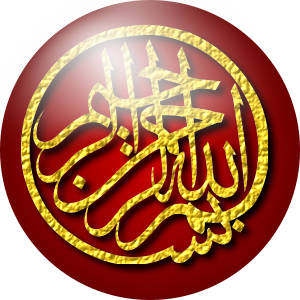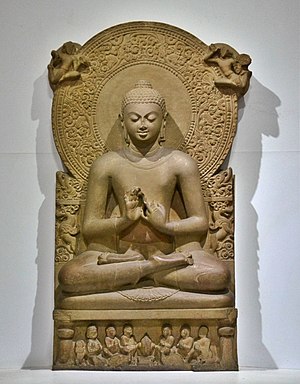Before the beginning – al-Jahiliyyah
Religions do not arise in vacuum; there is no big-bang, no “non-being” from which being arises as far as religious traditions are concerned. The context for the life and teachings of the Prophet lie in the historical circumstances and the religious potpourri that existed in in Arabia – especially in and around Mecca (the city of the Prophet’s tribe, the Quraysh), on the eve of his birth and ministry.
The historical Setting:
Arabia in the 6th Century CE was a land on the fringe of the great civilisations of the time. To its north were the empires of Byzantium and Sassanid Persia. In the south, in what is today Yemen were the ancient city-states Saba, Maʿīn, Qataban, Hadramauth and Himyar, that had links of trade, culture and perhaps kinship across the Red sea with the Christian Kingdom of Aksun (Abyssinia/ Ethiopia). In the north were the Bedouin tribes of the Ghassanids and Lakhmids – who served as clients for the Byzantines and Persians respectively. And along the mountainous Red sea coast of western Arabia, was the Hejaz or al-Hijaz, region of the great caravan-trading Bedouin tribes, united under the mercantile aristocracy of the tribe of Quraysh, with the sanctuary in Mecca as its spiritual centre.
The religious landscape of the peninsula was similarly diverse. The Arabs of the Hejaz were ‘pagans’, but the Ghassinids were monophysite Christians, the Lakhnids too, though they served the Persians, followed Christianity, probably Nestorian. The peoples of south-western Arabia were probably multi-religious – pagans, Jews and monophysite-Christian. In fact, according to some sources, the last Himyarite king in the Yemen region, Dhū Nuwās, converted to Judaism and began persecuting the Christian population, who appealed to the Byzantines for aid. The Byzantines arranged for the Christian Kingdom of Aksun to send an army under the general Abraha into Yemen. Abraha deposed Dhū Nuwās and became Governor. He is believed to have constructed a great Church at Sana'a and sought to extend his influence into the Hejaz to which purpose he led an army that included elephants against Mecca. According to Arab tradition the city was miraculously saved. This is said to have happened in the year of the Prophet’s birth (CE 570), which perhaps to commemorate this miracle, is known as “the year of the elephant”. In any case, this Christian kingdom of Yemen is believed to have ended after the Sassanids launched a counter-intervention and expelled the Ethiopians.
Pagan Arab Religion:
The pagan religious traditions of Arabia show great diversity. The Southern Arabia had ‘Athar, the god of thunderstorms and rain. ‘Athar is believed to be derived from the old Semitic sky-god El. Apart from ‘Athar, the city-states also had local patron deities. Most southern Arabian deities were associated with astral bodies – the Sun, moon, stars and planets.The Northern Arabians, including the tribes of the Hejaz followed a complex religious tradition which had incipient monotheism embedded in it apparently early on. The supreme deity was called “al-Lah”, a sky-god, and thus similar to El, he was also the chief deity of the Meccan sanctuary of the Ka’bah. While nominally the creator and the greatest of the gods, al-Lah (which means simply “the God”) was believed to be too remote. Popular worship was dedicated to three goddesses - Al-Ilāt (“the Goddess”), believed to be daughter or a consort, of al-Lāh; al-ʿUzzā (“the Powerful”) and Manāt (“Destiny”). These goddesses had shrines throughout Arabia. Amongst the Nabataens of Petra who came under Hellenic influence, al-Ilāt, was associated with Aphrodite. Important to this pagan religion was the functioning of seers or soothsayers called kāhins who interpreted the word of the gods in ecstatic trances – much like the Delphic oracles.
The Ka’bah
In the time before the prophet, the Ka’bah was a polytheistic centre and is believed to have housed idols of the three goddesses and other gods of Arabia, including Hubal, a Syrian god. Even prior to the advent of Islam, the Ka’bah was the greatest shrine for the Arabs of the Hejaz and pilgrimage to the Ka’bah along with circumambulation of the shrine was an important part of the Arab religious experience.According to legend, this sanctuary was first built by Adam (the first man), and later re-erected by Abraham (or Ibrahim) and Ishmael (Ismail). These traditions link the Arabs back to the early patriarchs of the One God – al-Lah. The Arabs believe themselves to be the descendants or Ishmael the eldest son of Abraham.
Not far from the shrine of Ka’bah is the sacred spring Zamzam. This is said to be the miraculous spring that al-Lah created to sustain Ishmael and Hagar when Abraham drove them out into the wilderness! Control over the shrine of the Ka’bah and the sacred spring seems to have given the Quraysh the leadership of the tribes of the Hejaz! The Quraysh established an area of ‘truce’ around the shrine of Ka’bah which provided respite from the inter-tribal warfare which was endemic to the Hejaz. A crucial result of this was the development of Mecca as a significant trading centre. It is possible that the inclusion of many idols representing the deities of several Arabian tribes in the Ka’bah shrine helped achieve a happy coincidence of pilgrimage and trade which eventually led to accumulation of great trade wealth.
It is claimed that destruction of the Ka’bah to establish the primacy of the Church at Sana'a was the primary aim of the failed Aksun attack on Mecca in the year of the elephant, but given the trading wealth of the city, plunder may have been a significant motive too.
Hanifism
The monotheistic core in the religious beliefs of the Arabs of the Hejaz in the form of al-Lah, the God, creator, is very likely to have led at least some Arabs to identify al-Lah with the God of the Jews and the Christians – religious traditions with which the Arabs were familiar with, and hence the feeling that they belonged to the same religious traditions as “the people of the book”.On the other hand, the Arabs of the Hejaz also monotheists, known as Hanīfs, who distanced themselves from the Meccan religious system by repudiating the old gods. In fact the term Hanīf derives from the Arabic root ‘hnf’ meaning “to turn away”. One of the ḥanīfs, Zayd ibn Amr, is described by Ibn Hisham (Ibn Ishaq in some sources), an early biographer of the Prophet, to have been a severe critic of the polytheistic ways of the Meccans. Zayd repeatedly called upon the Arabs to turn back to worship of the God of Abraham! Hanifism seems to have been known throughout the Hejaz, especially the Meccans who were sure to have encountered Hanif preachers. It is possible that this ideology had its influence on the Prophet, and some traditions have also recorded an encounter between the youthful Prophet and the aged Zayd!

![Reblog this post [with Zemanta]](http://img.zemanta.com/reblog_e.png?x-id=6db6dd89-1793-4c56-9dc3-b8a43521352b)

![Reblog this post [with Zemanta]](http://img.zemanta.com/reblog_e.png?x-id=3c43f821-c7e0-4aad-b33d-a6d8b0fe43fb)

